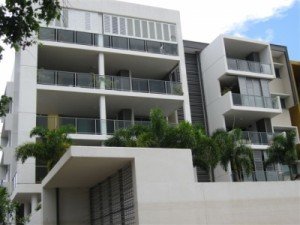Buying a retirement home is a complex and confusing business, with many hidden traps and fees to snare the unwary buyer. To make matters more difficult, there is a real lack of good quality independent information that prospective buyers can access to assist with their research. 
Take for example, this report here, from the website villages.com.au.
The report claims to compare the cost of staying in your existing home against the costs of living in a retirement village. Based upon a couple of key assumptions, the report claims that you either break-even, or are slightly better off, by moving into a retirement village instead of remaining in your home.
I take issue with this report for two reasons:
Firstly, you are ALWAYS, and I repeat ALWAYS, going to be better off financially by staying in your existing home rather than moving into a retirement village, even if you have to get a mowing or cleaning service in to assist you with maintaining the property. This is because the buying and selling of property incurs large expenses that can take years of capital growth to off-set.
Secondly, a retirement village is about lifestyle, not cost. No-one moves into a retirement village to make or save money. You move into a retirement village because you want the benefits of retirement community living – security, social life and a low-maintenance property.
I also have an issue with their key assumptions:
The investable difference
The report assumes that the retiree is able to sell their home and pocket (in this case) over $350k which is invested elsewhere. It would be great if this were the case for anywhere but the northern beaches of Sydney! Many people I speak with use most of the funds from the sale of their home to purchase a retirement unit. Remove this amount from the equation and the outcome is very different for the retiree.
Capital Growth
The report assumes that a retirement village will experience the full capital growth of 7-10% pa whereas a standard residential home should only expect 70% of that growth assumption. Yet Derek MacMillan, a director of the Retirement Villages Assoc. and head of Australian Unity Retirement Living says HERE that retirement village units are priced at around 85% of the median house price in the same area. You can’t have it both ways. Based on this report’s assumptions, the retirement village unit is going to exceed median house price growth in the surrounding suburb, meaning that over time, local residents will not be able to afford to move in. Unlikely. For the record, I would estimate that normal resident property will increase beyond that of retirement village units due the absence of fees associated with retirement village living.
If you do want to move out of your existing house and the financial outcome is important to you, then you need to consider the best ownership arrangements for that new property.
The ownership structures delivering the best financial outcomes, in order, are as follows:
- Downsize to another freehold residential property. Under this arrangement you don’t incur any fees additional to that found in a normal property and you get all of the capital gain when you sell.
- Find a freehold retirement community. Freehold retirement communities that don’t apply exit fees will deliver your best financial outcome at exit. Unfortunately very few of them exist and they don’t offer many lifestyle facilities, such as swimming pools.
- Buy a Leasehold retirement property. A true leasehold property is where you own the house and you lease the plot of land the dwelling occupies.
Most retirement villages in Australia sell their units under a deferred management fee structure, more popularly known as a Loan/Lease or Loan/Licence scheme. Under this arrangement, the resident pays the full freehold equivalent price for a “right to occupy” the unit in the form of a lease or licence. For every year they are in residence, they incur a deferred management fee, or exit fee (or departure fee in NSW), which is paid only when the resident leaves and the unit is re-sold. The outgoing resident may also have to pay half or all of their capital gains (if any) to the village operator as well. For more information on how deferred management fees work check out our blog post and video HERE.
As someone “on the ground” negotiating these contracts every day for my clients, I can tell you that if a resident can leave a village within ten years and re-coup their original capital investment, then they are doing very well. Most residents can expect to leave with around 60-80% of the original purchase price.
The Villages organisation that produced this report are associate members of the Retirement Villages Association (RVA). The RVA is an industry body with a membership encompassing retirement village operators, owners and developers. It is NOT a government body and it does NOT represent that interests of retirement village residents.
Despite my criticisms of retirement village purchase contracts, I am a huge fan of retirement villages and the lifestyle they offer to retirees. Whilst I recommend that you make the decision to move into a retirement village on lifestyle issues, you should also be careful to analyse the financial implications of the purchase contract as well.
What do you think of the report? Are they on the money?
Richard Andrews
